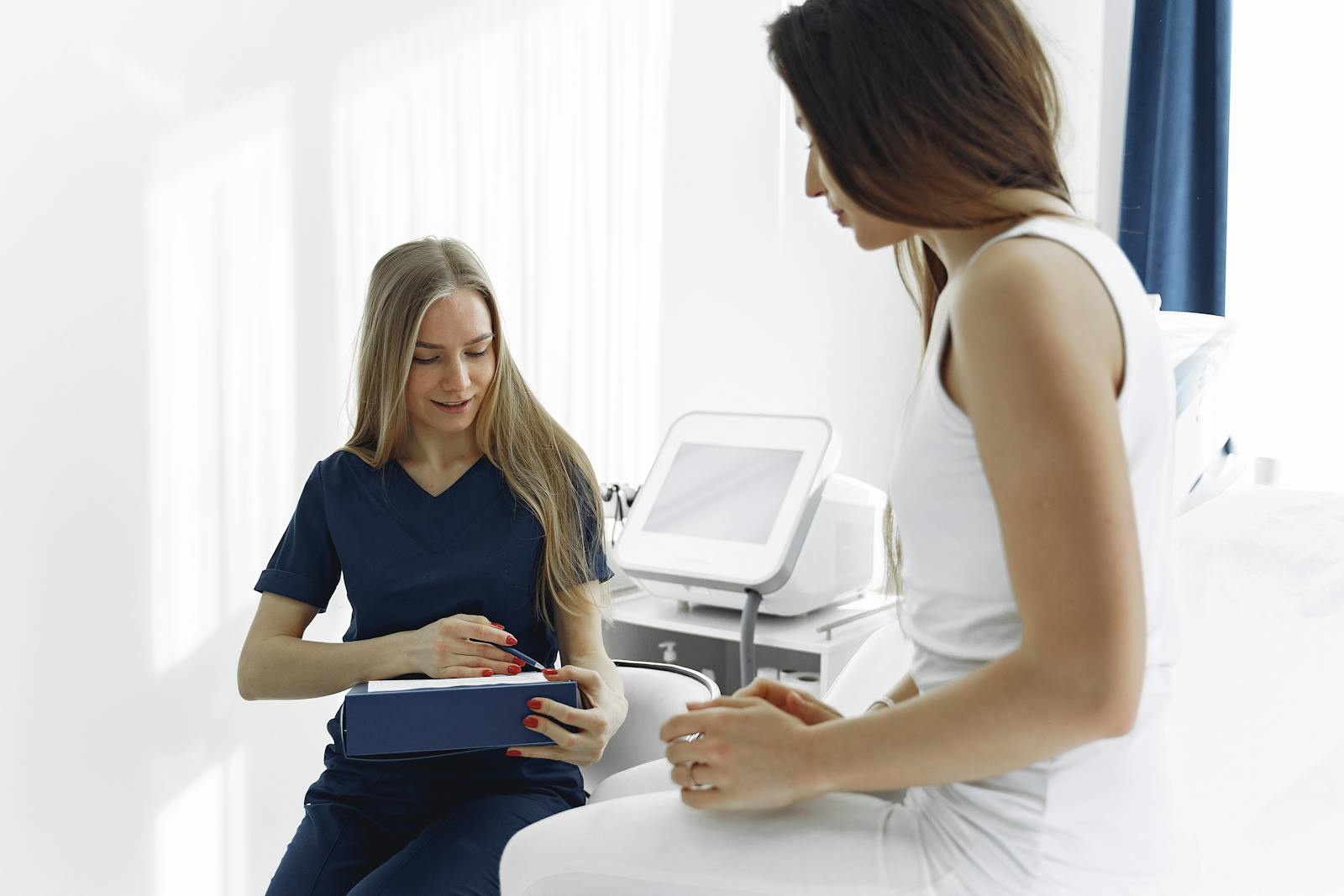The process of recovery after a coccygectomy, the surgical removal of the coccyx or tailbone, can be a complex and demanding journey. However, there are ways to expedite this recovery period, ensuring a more comfortable and efficient return to daily activities. In this discourse, we will touch upon vital aspects such as adequate rest, proper wound care, nutritional requirements, therapeutic exercises, and mental health considerations, among others. With this information, patients can significantly enhance their healing process, but how exactly? Stay with us to find out.
Understanding Coccygectomy Recovery
A comprehensive understanding of the coccygectomy recovery process is vital to optimize healing and ensure a swift return to daily activities. Coccygectomy, a surgical procedure that involves the removal of part or all of the tailbone (coccyx), is typically performed to alleviate persistent coccydynia when non-surgical treatments have failed.
The surgical procedure overview is relatively straightforward, but the recovery process can be complex and lengthy. It requires careful management to prevent complications such as infection, bleeding, wound dehiscence, and rectal injury. Moreover, anesthetic complications can occur, ranging from nausea and vomiting to serious issues like allergic reactions or complications associated with intubation.
Effective coccygectomy recovery hinges on meticulous wound care, pain management, and physical therapy. The patient must also monitor for signs of coccygectomy complications, including severe pain, fever, pus or discharge from the wound site, and changes in bowel or bladder function.
Understanding the recovery process and potential complications can help patients prepare for the journey ahead, fostering adherence to post-operative instructions and enhancing the overall recovery experience. By being informed, patients can proactively contribute to their healing process, reducing risks and promoting a quicker return to normal activities.
Importance of Adequate Rest
In the broader landscape of coccygectomy recovery, ensuring adequate rest plays a pivotal role in fostering optimal healing and minimizing complications. This emphasis on the Sleep Importance is backed by scientific research, which shows that restful sleep can significantly improve the body’s ability to repair and rejuvenate itself, particularly after a major surgical intervention such as coccygectomy.
The body’s healing processes are most active during sleep. Hence, getting sufficient sleep is not only beneficial but essential for a speedier recovery. It is also worth noting that during the initial stages of recovery, patients may experience fatigue more frequently. This is the body’s way of signaling the need for more rest to facilitate healing.
Establishing a Rest Schedule can also be incredibly beneficial. A well-maintained Rest Schedule helps regulate the body’s internal clock or circadian rhythm, thereby promoting better sleep quality and duration. It is recommended that patients maintain consistent bedtimes and wake-up times, even on weekends, to keep their internal clock on track.
Proper Wound Care Techniques
Proper wound care after a coccygectomy is a critical component of the post-surgical recovery process. We will elucidate the essentials of wound cleaning steps to minimize the risk of infection and to optimize healing. A clear understanding of these techniques will equip patients with the necessary knowledge to expedite their recovery journey.
Understanding Coccygectomy Wound Care
Managing your post-coccygectomy wound with meticulous care is critical to promote healing, prevent infection, and accelerate recovery. Choosing the right wound dressing materials is essential in this regard. The use of sterile, non-adhesive dressings can protect the surgical site, absorb exudate, and facilitate an optimal healing environment. Dressings should be changed regularly according to the healthcare provider’s instructions. Additionally, understanding the typical healing timeline will guide your expectations and signal any deviations that require medical attention. The initial inflammatory phase lasts for a few days, followed by the proliferative phase where new tissue is formed. Finally, the maturation phase can last up to a year, resulting in a fully healed wound. Regular monitoring of the wound’s progress is imperative in this process.
Essential Wound Cleaning Steps
Ensuring the cleanliness of your post-coccygectomy wound is a fundamental step in fostering a healthy healing environment and mitigating the risk of infection. This is achieved through meticulous wound dressing and diligent infection prevention.
Consider these essential wound cleaning steps:
- Always wash your hands thoroughly before touching the wound or changing the dressing. This simple step is crucial for infection prevention and maintaining cleanliness.
- Gently clean the wound with a mild soap and warm water. Do not scrub or irritate the wound.
- After cleaning, pat the wound dry with a clean towel. Avoid rubbing as it may cause irritation.
- Finally, apply a fresh wound dressing. Ensure the dressing is sterile and properly covers the wound to prevent exposure to bacteria.
These practices should be integrated into daily wound care routines.
Preventing Infection Post-Surgery
In the aftermath of a coccygectomy, conscientious adherence to wound care techniques is paramount to prevent post-surgical infections. The risk of infection can be significantly mitigated through appropriate antibiotic use and diligent post-surgery hygiene. Antibiotics, prescribed by the healthcare provider, should be taken as directed to combat any potential bacterial invasion.
Furthermore, maintaining post-surgery hygiene involves keeping the wound area clean and dry. It is crucial to change dressings regularly under sterile conditions. Avoid direct contact with the wound and refrain from scratching or irritating the area. By incorporating these preventive measures, the incidence of infection can be drastically reduced, paving the way for a smoother recovery post-coccygectomy. Patient education is key in ensuring successful recovery and preventing complications.
Nutritional Needs for Recovery
Adequate intake of essential nutrients plays a critical role in accelerating the healing process post-coccygectomy. Diet optimization becomes a vital factor for a speedy recovery. A balanced diet rich in protein, vitamins, and minerals aids the body in repairing tissues and strengthening the immune system.
In addition, the importance of hydration cannot be overstressed. Adequate fluid intake ensures optimal body function, helps in the absorption of nutrients, and aids in flushing out toxins from the body.
To evoke emotion and stress the importance of nutrition for recovery, consider the following:
- The body’s ability to heal itself is significantly dependent on the nutrients we provide it.
- A well-hydrated body functions more efficiently, speeding up the recovery and healing process.
- Diet optimization is not just about eating healthy, it’s about providing your body with the specific nutrients it needs to repair and recover.
- Dehydration can lead to complications, slow down recovery, and increase pain and discomfort.

Safe Exercises Post-Coccygectomy
Gradually incorporating safe exercises into your daily routine post-coccygectomy can significantly aid in enhancing mobility and speeding up recovery. One of the most beneficial activities to consider includes pelvic strengthening. This involves exercises targeting the muscles around the lower abdomen and hip region, which can contribute to improved posture, stability, and ease of movement.
Examples of such exercises include pelvic tilts and bridges. Pelvic tilts involve lying on your back with bent knees and slowly rolling your pelvis upwards. Bridges, on the other hand, require raising your hips while keeping your feet flat on the floor. It is crucial to engage your core during these exercises to maximize their effectiveness.
Additionally, incorporating breathing techniques can play an instrumental role in recovery. Deep, controlled breathing exercises can aid in reducing stress, promoting relaxation, and improving overall health. These involve inhaling deeply through the nose, holding the breath momentarily, and exhaling slowly through the mouth.
Pain Management Strategies
While exercise and breathing techniques significantly aid in recovery, it is also essential to explore effective pain management strategies following a coccygectomy. Pain, a common and often debilitating side effect of the procedure, can significantly hinder the healing process. Therefore, adopting the right strategies to control it is vital.
Pain management can be approached in various ways, including the use of alternative painkillers and mind-body techniques. The following are some strategies to consider:
- Alternative Painkillers: These non-opioid options can provide pain relief with minimal risk of addiction. They include non-steroidal anti-inflammatory drugs (NSAIDs), acetaminophen, and certain antidepressants or anticonvulsants.
- Mind-Body Techniques: Techniques such as guided imagery, meditation, and deep breathing can help reduce pain perception by promoting relaxation.
- Heat and Ice Therapy: Applying heat or cold to the affected area can help alleviate pain, reducing the need for medication.
- Pacing Activities: Balancing activity and rest periods can prevent exacerbation of pain caused by fatigue.
It’s important to remember that every patient’s experience with pain is unique. Therefore, pain management should be tailored to the individual’s needs, always under the guidance of a healthcare professional.
The Role of Physical Therapy
Physical therapy plays a pivotal role in the post-operative phase of a coccygectomy, contributing significantly to expedited recovery. The benefits of physical therapy are manifold, ranging from pain management to improving overall functionality. Specific exercises tailored for coccygectomy recovery can facilitate the healing process, enhance mobility, and restore strength, underscoring the critical significance of physical therapy in this context.
Benefits of Physical Therapy
In the aftermath of a coccygectomy, embarking on a well-structured physical therapy program can play a pivotal role in accelerating recovery, enhancing mobility, and improving overall quality of life. This rehabilitation timeline, utilizing specific therapy equipment, is tailored to restore strength and flexibility while reducing discomfort.
- Physical therapy can lessen post-surgical pain, reducing reliance on pain medications.
- Therapy can help regain mobility and strength, allowing for a return to daily activities.
- Regular therapy sessions can foster better body awareness, leading to improved balance and coordination.
- The guidance of a physical therapist can help mitigate the risk of re-injury during the recovery period.
Physical therapy, when appropriately incorporated into a coccygectomy recovery plan, is a cornerstone for a successful and expedited return to a pain-free life.
Exercises for Coccygectomy Recovery
Building upon the value of physical therapy in coccygectomy recovery, specific exercises are integral components of the rehabilitation process, meticulously designed to restore functionality, enhance mobility, and alleviate post-surgical discomfort. Emphasis is placed on posture improvement exercises, which aim to correct any imbalances and promote optimal spinal alignment, thus reducing undue strain on the surgical site. Another beneficial approach is scar massage, a technique utilized to break down scar tissue, improve flexibility, and prevent adhesions that can limit mobility. Gentle stretching and strengthening exercises also play a pivotal role in restoring muscle balance and promoting recovery. These therapeutic exercises, under the guidance of a physical therapist, can accelerate healing and improve the quality of life post-coccygectomy.
Mental Health and Recovery
While the physical aspects of recovery after a coccygectomy are vital, it is equally important to address the mental health components, as psychological resilience can significantly accelerate the healing process. Emotional resilience and stress management play essential roles in this context.
Emotional resilience refers to one’s ability to adapt to stressful situations or crises. When patients develop emotional resilience, they can better adjust to the changes and challenges that come with surgery and recovery. On the other hand, effective stress management techniques can help to reduce anxiety and promote a positive mindset, which can contribute to faster healing.
To aid in mental health during recovery, consider implementing these strategies:
- Practice mindfulness techniques, like meditation or deep breathing exercises, to maintain mental focus and reduce stress.
- Engage in light physical activity, such as walking or gentle stretching, as it can boost mood and energy levels.
- Maintain a balanced diet and adequate hydration, as proper nutrition can positively influence emotional wellbeing.
- Pursue hobbies or activities that bring joy and relaxation. This can help divert attention from pain and discomfort and encourage a positive outlook.

Recognizing Signs of Complications
Recognizing signs of complications after a coccygectomy is vital to speedy recovery and patient safety. Key indicators of potential issues include post-surgery infections, unexpected bleeding, and understanding one’s pain threshold. Detailed knowledge of these factors help in timely intervention, appropriate management and, ultimately, a more efficient recovery process.
Identifying Post-Surgery Infections
Post-operative infection, a potential complication after coccygectomy, manifests through several clinical signs that demand immediate attention. It is crucial to identify infection symptoms early to initiate appropriate antibiotic usage, hinder the development of severe complications, and expedite recovery.
Infection symptoms can include:
- Increased pain around the surgery site, unresponsive to prescribed pain relief.
- Inflammation or swelling that intensifies rather than recedes.
- Fever, often accompanied by chills or a general feeling of malaise.
- Pus or a foul-smelling discharge from the surgical wound.
These indicators warrant immediate medical consultation. Prompt detection and treatment of post-operative infections minimize potential complications and significantly facilitate the recovery process, ensuring a swift return to your regular activities.
Understanding Pain Threshold
In the context of post-surgery recovery, comprehending your pain threshold is crucial, as it can help in early detection of potential complications. Pain perception differences among individuals make it necessary to have a personalized pain management plan. This plan should consider both the patient’s subjective experience of pain and the objective measurements of physiological responses.
The pain threshold is the minimum level of stimulation at which a person begins to feel pain. Understanding this level is key in managing post-operative discomfort and in recognizing signs of complications. If the pain exceeds what is expected based on the pain threshold, it may be a sign of issues such as infection or nerve damage. This awareness can expedite treatment, improving outcomes and speeding recovery.
Managing Unexpected Bleeding
While understanding your pain threshold is essential for managing post-operative discomfort, it’s equally crucial to identify unexpected bleeding as a possible sign of complications following a coccygectomy.
- Be vigilant for continuous or excessive bleeding from the surgical site. This could indicate a hematoma or uncontrolled hemorrhage.
- Monitor your post-surgery hemoglobin levels. A significant drop may suggest internal bleeding.
- Familiarize yourself with bleeding control methods. Applying firm, direct pressure to the wound can often stem minor bleeding.
- If bleeding persists despite your efforts, seek immediate medical attention.
Being aware of these signs and prepared to act can significantly improve your recovery process. Remember, prompt recognition and intervention can prevent a minor issue from becoming a major problem.
Importance of Regular Check-ups
Regular medical evaluations following a coccygectomy play a pivotal role in ensuring a swift and safe recovery. The importance of these check-ups cannot be overstated as they aid in proactively identifying any complications that may arise post-surgery.
The follow-up frequency is typically determined by the surgeon based on factors such as the patient’s age, overall health, and the complexity of the surgery. Within the first few weeks, patients might need to visit their doctors more frequently—once every week or two. Over time, as healing progresses, the frequency of these visits may decrease.
These regular check-ups provide an opportunity for medication adjustments. Pain management is a critical aspect of recovery after a coccygectomy, and regular reviews of the patient’s pain levels and response to medication are essential. The doctor may need to adjust dosages or switch medications to optimise the patient’s comfort and enhance recovery speed.
Furthermore, check-ups ensure that the surgical wound is healing appropriately and that there is no sign of infection. They also allow for monitoring of the patient’s general health and emotional well-being, which can significantly impact recovery. A commitment to regular check-ups is, therefore, instrumental in facilitating a smooth recovery process.
Tips for Returning to Activities
Gradual reintegration into daily activities after a coccygectomy is a delicate process that necessitates mindful planning and adherence to medical advice to foster optimal recovery. It’s essential to understand that the post-operative period is not the time for rigorous activity but rather a time for healing.
Here are some tips for a smooth transition back to your normal routine:
- Activity Modification: Prioritize low-impact activities that will not strain the surgical area. Avoid sitting for prolonged periods and when you must, use a coccyx cushion to alleviate pressure.
- Supportive Seating: Invest in ergonomically designed chairs that provide adequate support for your lower back and tailbone. Avoid hard or uncomfortable seating surfaces.
- Physical Therapy: Engage in physiotherapy exercises designed to strengthen your back muscles and improve flexibility. However, always consult with your healthcare provider before starting any exercise regimen.
- Rest: Don’t underestimate the power of rest in the healing process. Ensure you get adequate sleep and take breaks in between activities.
Frequently Asked Questions
Can I Use Any Over-The-Counter Medications to Speed up My Coccygectomy Recovery?
Over-the-counter medications may aid in pain management post-coccygectomy. However, proper dietary adjustments are equally crucial. Always consult your healthcare provider before initiating any self-medication to ensure safety and effectiveness during your recovery.
How Will My Sleep Patterns Be Affected After a Coccygectomy?
Post-surgery insomnia may occur after coccygectomy due to discomfort or anxiety. Sleep position adaptations, like lying on your side with a pillow between your knees, can alleviate pressure and aid in maintaining healthy sleep patterns.
What Kind of Clothing Should I Wear During My Recovery Period?
During your recovery period, attire promoting posture correction is essential. Loose, comfortable clothing and supportive, comfortable footwear can aid in minimizing discomfort. Avoid tight or restrictive outfits to prevent unnecessary pressure on the surgical area.
Can I Drive After My Coccygectomy Surgery and if So, When?
Post surgery mobility can be limited after a coccygectomy. Driving should be avoided until discomfort subsides, often 2-3 weeks post-operation. Exploring public transportation options during this recovery period may be beneficial. Always consult your surgeon.
Are There Any Alternative Therapies That Can Help Speed up My Recovery Process After a Coccygectomy?
Alternative therapies such as physical rehabilitation can aid in improving mobility post-coccygectomy. Dietary changes, including a high-protein diet, can also enhance tissue repair and speed up the overall recovery process.

